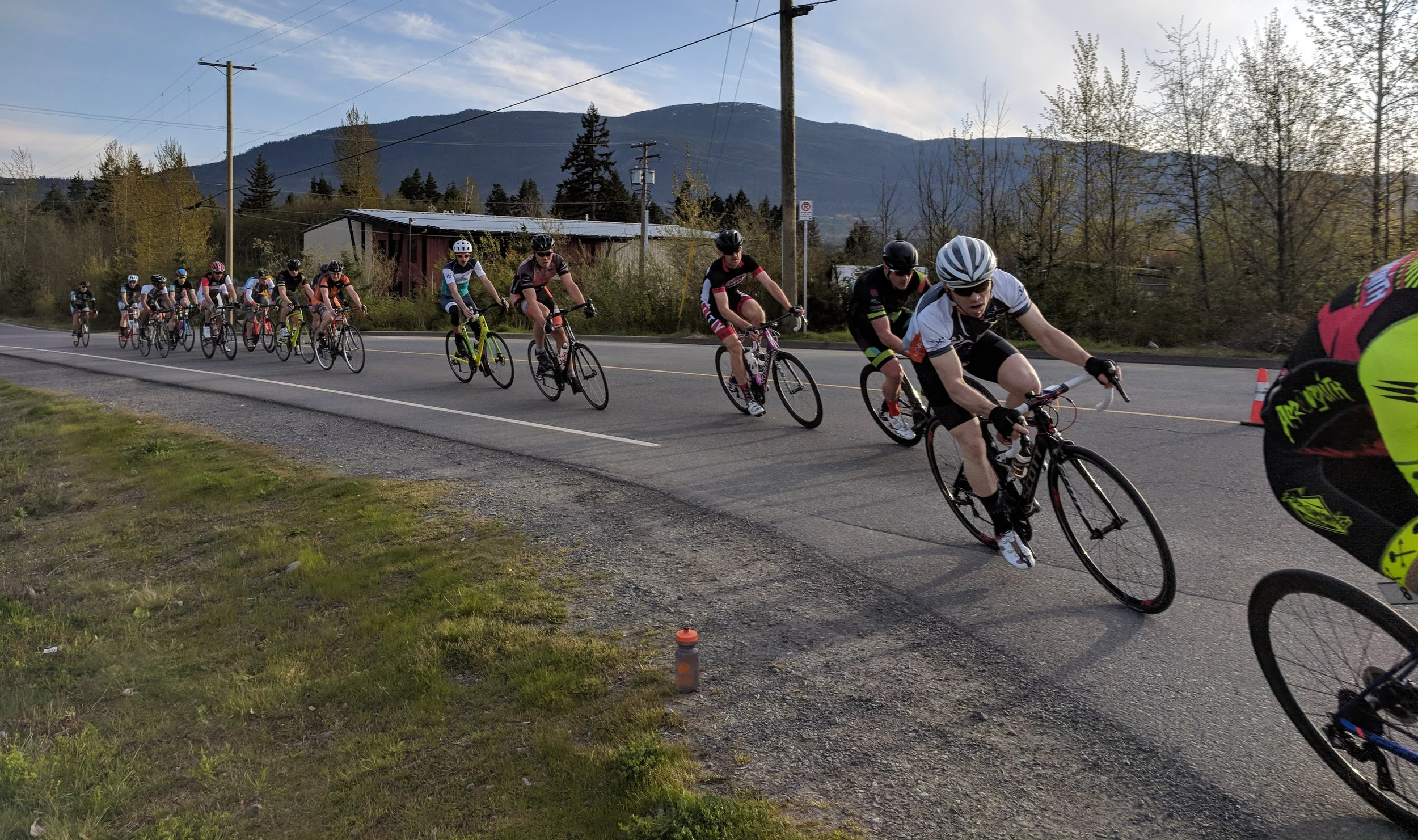We have all observed or have been part of a group of cyclists. These groups vary from "Monday's washing on the line", where group members are spread out over hundreds of metres, to close, well-organised units that move almost as one, enabling other, faster road users to pass in safety. To help you develop or improve your group riding skills, we reprint the following article without comment. Hopefully you will all learn something from it. Ed.
The essence of group riding is riding the paceline. It allows cyclists to travel faster with less effort and provides a better social experience. (It is also a foundation of racing.) Pacelines do have some inherent danger and require communication among the riders. But a good paceline is a wonderful thing.
The basic SINGLE paceline is simple. The riders align behind one another to take maximum advantage of the "drag" effect of the cyclists to the front. The cyclist in the front will set the group's pace, when the lead rider decides it is time to change, that rider pulls off to one side and drifts back to the end of the paceline.
The new lead cyclist increases effort SLIGHTLY (just increases the amount of pressure on his pedals) to maintain the group pace. A good paceline is smooth. A good paceline is built on trust. The riders have to be confident that the others in the group will communicate well and ride safely.
TYPES OF PACELINES
| Single |
Double |
Rotating |
Echelon |
 |
Which direction should the lead rider pull off? The single paceline picture above shows the rider pulling off to the left. But there are various reason to pull off either direction. If there is a cross wind the lead rider will pull off whichever direction the wind is coming from. This is because the riders in the single paceline will naturally line up as shown in the "echelon" picture to hide themselves from the wind. Some believe that the rider coming off the front and going backwards should not be in the lane of car traffic and should, as a general rule, pull off to the right. Basically, whichever direction the group is using, all riders should do the same thing.
The DOUBLE paceline is a minor modification of the single paceline. In this setting there are just two single pacelines side by side. The riders on the front of each paceline pull off in opposite directions. As a general rules, the pacelines are far smoother if the two front riders agree and pull off simultaneously. Otherwise, one of the lines has to surge to get the front riders side by side.
A ROTATING paceline requires more focus and greater skills but is very satisfying to be part of. In a rotating paceline there is an advancing (faster) line of riders and a retreating (slower) line of riders.
The retreating line is on whichever side the wind is coming from. If it is a headwind a tailwind or no wind, usually the retreating line will be on the right side and the advancing line will be on the left. (The opposite of the picture above).
The key to a rotating paceline is that when the rider at the front of the advancing line clears the rider who is on the front of the retreating line, the advancing rider moves into the retreating line and softens up his pace. The rider who was behind him continues the pace of the advancing line until that rider switches over. The rider in the advancing line should NEVER surge. The idea is that you ride to the front and float to the back in a constant rotation. You change your speed by "soft-pedaling" as you switch to the retreating line and increasing your pedal pressure as you switch from the retreating line to the advancing line.
Smooth switches, and keeping the distance between the riders in the paceline as small as possible will keep the paceline smooth.
An ECHELON is a paceline ridden in a crosswind. The riders will naturally find cover at an angle as shown above. An Echelon can refer to either a single paceline or a rotating paceline. In either case, the lead rider will pull off INTO the wind.
 This year the popular MIVA cyclo-cross clinics return for a third year. The venue is Beban Park BMX grounds and the new day and time is Wednesday from 5pm on. All MIVA members and associate members may take part for free. Charge for non-members is $5 per session. Dates are:
This year the popular MIVA cyclo-cross clinics return for a third year. The venue is Beban Park BMX grounds and the new day and time is Wednesday from 5pm on. All MIVA members and associate members may take part for free. Charge for non-members is $5 per session. Dates are:

